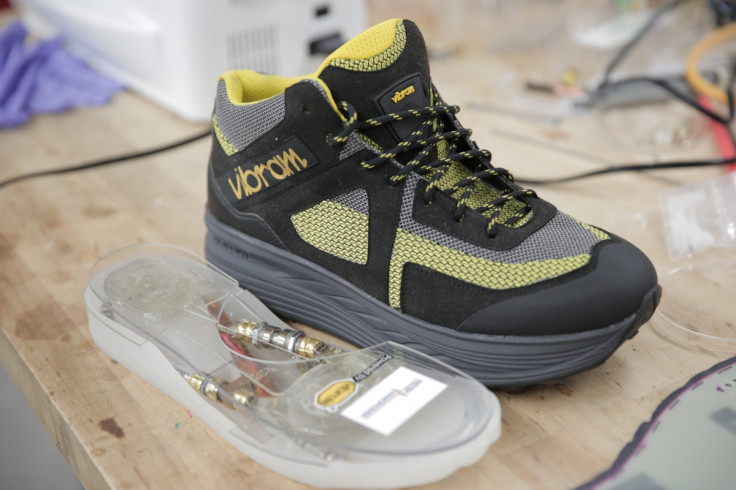Sole power: New battery technology can charge your smartphone as you walk

Scientists in the US have developed a new charging technology capable of harvesting power through movement. The technology, created by engineers at the University of Wisconsin–Madison, can be inserted into footwear and used to power mobile devices on the fly, or stored for later use.
The concept employs a "bubbler" device that contains no moving parts and instead consists of two flat plates separated by a small reservoir of conductive liquid. One of the plates contains tiny holes that create pressurised gas. When these come into contact with the other plate, they collapse. The repetitious movement of these bubbles forming and collapsing moves the conductive fluid back and forth, generating power as a result. Users simply plug their device into the in-sole charger and away they go.
According to the creators, the current prototype is capable of producing up to 10 watts of power per square metre, with typical smartphones only requiring around 2 watts. However, the researchers theorise that the technology could potentially generate anything up to 10 kW of power.
Other than allowing consumers to do away with cables, the researchers say energy harvesting footwear could be used by the military to enable troops to power equipment without having to rely on cumbersome batteries. It could also be used in underdeveloped countries to provide power in areas without access to a local grid.
The UW-Madison scientists are now attempting to commercialise the technology through their startup company, InStep NanoPower. Mechanical engineering professor Tom Kupenkin said: "Human walking carries a lot of energy. Theoretical estimates show that it can produce up to 10 watts per shoe, and that energy is just wasted as heat. A total of 20 watts from walking is not a small thing, especially compared to the power requirements of the majority of modern mobile devices."
© Copyright IBTimes 2024. All rights reserved.






